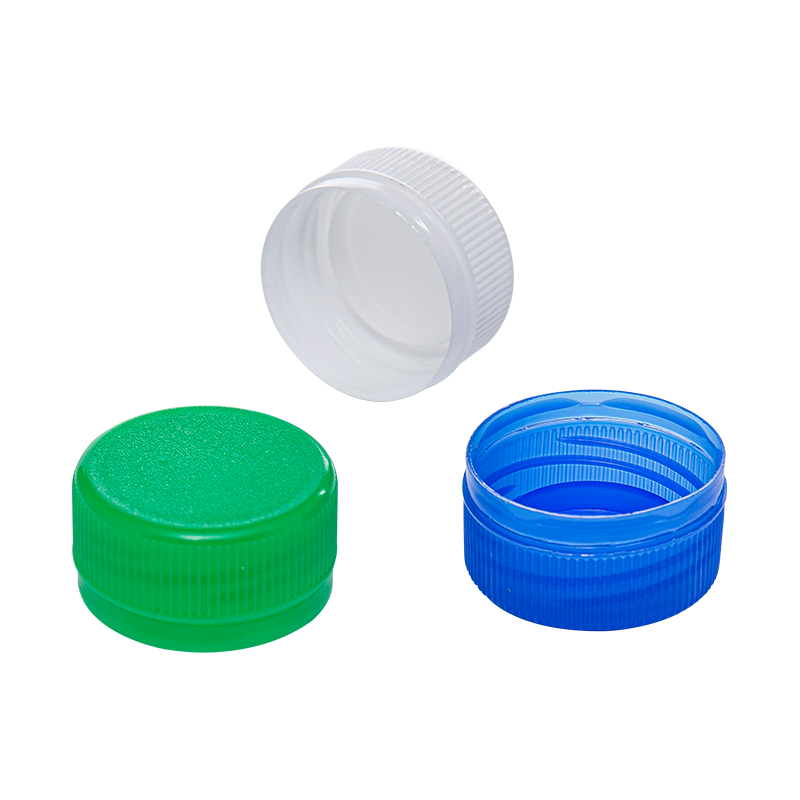The sealing technology of plastic bottle caps is crucial in ensuring that the liquid in the bottle is kept fresh and leak-proof for a long time. The following is a detailed description of several key sealing technologies and how they work:
1. Sealing Ring Design (Sealing Rings)
The sealing ring is the core component of the plastic bottle cap, which directly affects the sealing performance of the bottle cap. The sealing ring is usually made of rubber, silicone or other elastic materials, which can form a tight sealing layer between the bottle cap and the bottle mouth to prevent the leakage of air, moisture or liquid.
Elasticity and adaptability: The elasticity and flexibility of the sealing ring enable it to form a close contact with the bottle mouth, and maintain good sealing even in long-term storage or temperature changes. The design of the sealing ring can ensure that it has good adaptability between different bottle mouth sizes and shapes.
Material selection: The material of the sealing ring is usually selected from high-quality rubber or silicone that can resist liquid corrosion, high and low temperature resistance, and aging resistance, which can effectively prevent the bottle cap from aging, hardening, deformation and other problems during long-term use.
2. Leak-proof Design
The leak-proof design of plastic bottle caps is designed to ensure that liquids are not easy to leak, especially when the bottle is subjected to external pressure or vibration. Leak-proof design is usually achieved in the following ways:
Thread and bottle mouth matching: The thread design of the bottle cap matches the thread of the bottle mouth to ensure that the bottle cap can be tightly tightened to form a closed sealing layer. The precision and depth of the thread are crucial. Too shallow or too deep threads may lead to poor sealing, which may cause leakage.
Double seal: Some high-end bottle caps use a double seal design, that is, sealing rings or special rubber rings are set on both sides of the bottle cap to provide a stronger sealing effect, ensuring that the bottle cap will not leak even during transportation and storage.
3. Compression Sealing
In some bottle cap designs, sealing is achieved through compression sealing technology. The sealing ring inside the bottle cap will be compressed when the cap is closed, forming a strong sealing layer. This technology is particularly suitable for designs that are easy to open, such as pull-tab bottle caps.
Pressure uniformity: During the capping process, uniform pressure is used to ensure that the contact surface between the sealing ring and the bottle mouth is fully in contact, avoiding leakage caused by uneven pressure.
4. Heat Sealing Technology
Heat sealing technology is often used to seal certain beverage or chemical bottle caps, especially in situations where no air or moisture is required. This technology heats and softens the sealing material (such as aluminum foil or heat-sealed plastic) at the edge of the bottle mouth, and then seals it with the edge of the bottle mouth to form a strong seal.
Preventing pollution: Heat sealing technology can prevent air or external pollutants from entering the bottle, ensuring the long-term preservation of the liquid in the bottle, which is especially important for perishable foods or medicines.

5. Vacuum Sealing
Vacuum sealing is a common sealing technology for beverage or food bottle caps, especially in products that need to extend the shelf life. By extracting the air in the bottle before the bottle mouth is closed, a negative pressure environment is formed to prevent microbial growth and liquid oxidation.
Fresh-keeping effect: Vacuum sealing technology can effectively prevent air from entering the bottle, reduce the oxygen content in the liquid, inhibit oxidation reaction, and thus extend the freshness of the liquid.
Prevent air leakage: Since the bottle is evacuated, a tight negative pressure seal is formed between the bottle cap and the bottle mouth, which can effectively prevent liquid leakage and ensure that the liquid does not leak out during transportation.
6. Anti-counterfeiting and tamper-evident design (Tamper-Evident Design)
Many plastic bottle caps are designed with anti-counterfeiting or anti-tampering mechanisms to ensure that consumers can know whether the bottle cap has been opened. Tamper-evident design usually sets a breakable connection ring or label between the bottle cap and the bottle body.
Consumer trust: This design not only improves the safety of the bottle cap, but also ensures that the liquid in the bottle has not been tampered with or contaminated, thereby increasing the freshness and safety of the product.
Prevent air from entering: The anti-counterfeiting design can also prevent external pollutants and air from entering the bottle, further improving the sealing and leak-proof effect.
7. Pressure Relief Valves
Some plastic bottle caps, especially those for carbonated beverages, are equipped with pressure relief valves or air pressure regulating devices. This device can release pressure when the air pressure in the bottle is too high, preventing the bottle cap from bursting or leaking due to excessive air pressure.
Controlling pressure changes: This design is particularly suitable for carbonated beverages and other carbonated beverages. It can maintain the balance of gas in the bottle when the pressure changes, preventing gas leakage or loosening of the bottle cap.
The sealing technology of plastic bottle caps includes a variety of designs and processes, such as sealing ring design, compression closure, heat sealing technology, vacuum sealing, anti-counterfeiting design and pressure balance, etc. Each technology plays a vital role in preventing leakage, extending the shelf life and ensuring the quality of the contents in the bottle. By rationally selecting and optimizing these technologies, it is possible to ensure that the liquid in the bottle is kept fresh for a long time and effectively prevents leakage, ensuring the safety, stability and consumer experience of the product.